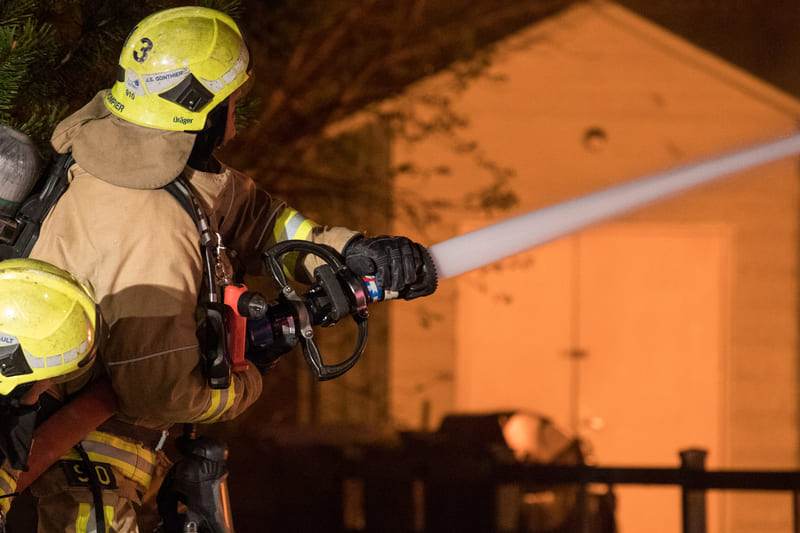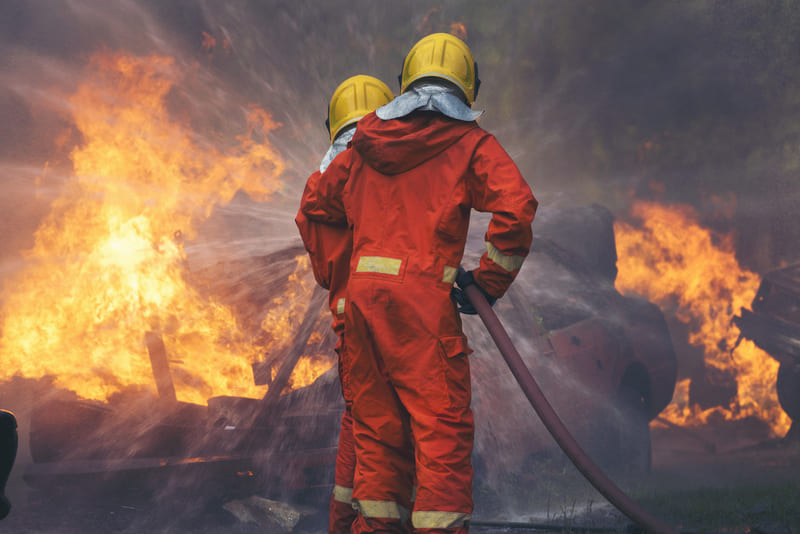Working in the firefighting industry requires a great deal of skill and fire fighting training, especially when it comes to implementing official techniques on the frontlines. When dousing flames, firefighters are taught to follow a systematic approach in firefighting to ensure that they are tackling the fire efficiently and safely. Depending on the location and cause of the fire, there are specific strategies that firefighters use to extinguish different flames.
As a leading health and safety educational institute, EMCARE understands the value of learning the proper firefighting techniques, which is included in our training courses. In this quick guide, we’ll be breaking down the official firefighting techniques and some essential strategies that are essential fire fighting training.
The Five Official Firefighting Techniques
Fires can arise in any place, which is why it’s crucial for firefighters to be prepared for every possible scenario. In any emergency, the safety of those who are close to the affected area must be prioritised, especially when a fire breaks out. If a fire is not extinguished according to the steps set out by training, it can worsen the conditions of the fire and put more people in danger.
To tackle fires effectively, firefighters are taught five basic techniques in fire fighting training that are essential for extinguishing flames. Whether a fire occurs in a high-rise building or in nature, these techniques help firefighters to prevent the spread of flames and protect those nearby:
Fog Attack
When a fire arises in a room or enclosed building, this is referred to as a compartment fire. Like its name, a fog attack is a fire fighting training technique that uses fog to extinguish fires. This technique is best used in places where there is no wind present as any ventilated spaces can disrupt the effectiveness of the fog. This is a common method used by firefighters and works by using the fog nozzle of the hose instead of the jet.
Two Lines In Method
Unlike fog attacks, this technique is specially implemented for tackling fires that are prone to strong winds. Forceful winds can make an existing fire exponentially worse, which is why it is imperative to extinguish the flames as quickly as possible. To employ this technique, two teams of firefighters are used to operate two different extinguishing techniques. While one team uses a strong stream of water to put out the fire, the other team operates the fog nozzle. This technique is especially useful for dosing flames while preventing the spread of the fire, making it an essential part of fire fighting training.
Direct Attack
One of the most well-known techniques taught in fire fighting training is the direct attack. Before extinguishing the flames, the firefighter must have a clear view of the fire to secure a good aim. The hose is then aimed at the base of the fire, which smothers the flames until it is completely extinguished. As this method uses a more direct approach, the water jet needs to be especially powerful to attack the flames. The combination of the concentrated stream of water and minimal ventilation allow for the fire to be doused quicker.
Indirect Attack
In this method, the hose is aimed at the ceiling above the fire to cause the water to drop down instead of extinguishing the fire head on. Indirect attacks work best on fires that occur in confined spaces, such as closed apartments. The key attributes of this technique that make it effective is its ability to absorb vapour and create a rain-like stream of water. When the vapour of the flames is absorbed, it helps to extinguish the fire, especially as the water from the ceiling drops onto it.
Combination Attack
If there is a risk that a fire could spread in a confined space, a combination attack is often used to extinguish flames and tackle overhead gases. True to its name, this technique uses both indirect and direct attack methods to douse the flames. When used in tandem, these techniques are especially effective for putting out fires and targeting harmful gases. If the area of the fire is ventilated, this method is highly recommended.

Specialised Strategies For Specific Fires
Much like the location of a fire informs how it should be extinguished, the same goes for different types of fires. Depending on what the source of the fire is, firefighters stop the spread of the flames by using specific strategies taught in fire fighting training. These strategies include:
Urban Blazes
When a fire arises in a building, it needs to be contained immediately as building fires can spread rapidly. In fire fighting training, firefighters are taught to prioritise the rescue of civilians, the ventilation of burning gases and the containment of the source fire. These steps need to be followed to prevent the fire from catching on to other parts of the building.
Vehicle Fires
Unlike other strategies that form part of fire fighting training, this method relies on the use of special foam extinguishers. As there is a risk of a fuel explosion, vehicle fires are incredibly dangerous and must be handled with extreme caution. Firefighters must ensure that they decrease the temperature of the vehicle while extinguishing to prevent this hazard.
Forest Fires
Fires can spread incredibly fast in nature, which is why it’s crucial that specific steps are followed to contain the fire. A popular strategy used for many forest and mountain fires is the use of aerial water drops carried by helicopters. Other strategies used for these types of fires include the removal of nearby vegetation as well as controlled burns.

EMCARE’s Training Program
Becoming a successful firefighter requires skill, bravery and extensive training. At EMCARE, we offer a range of high-quality courses led by professionals to prepare with the tools you need to effectively protect those around you.
If you’re interested in protecting your community and preventing the spread of harmful fires, visit our website to find out more about our fire fighting training courses.















